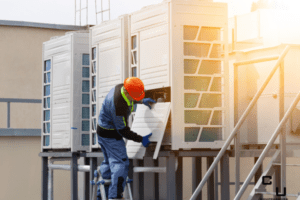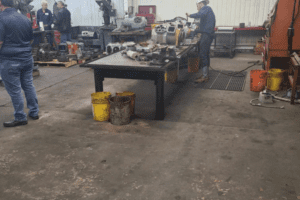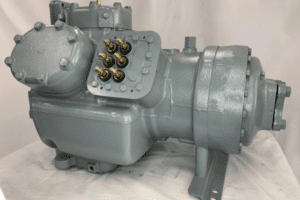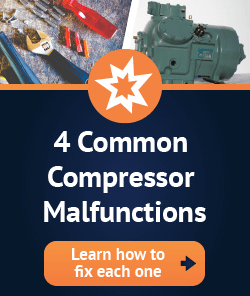Reefer Containers
There are several different types of reefer containers used to transport temperature-sensitive merchandise. A closed reefer is a single container that has an automatic cooling/heating system that runs only on electricity. MA/CA (modified/controlled atmosphere) reefer containers are heavily insulated and use an air exchange system to maintain the appropriate atmosphere. AFAM (automatic fresh air management) reefers are technologically advanced to automatically regulate the air exchange within the unit to maintain a constant temperature.
Basic Components of a Reefer Refrigeration System
Every reefer refrigeration system has the same basic components that make it functional. By working together, they can maintain a constant temperature that preserves the items being transported and extending their overall shelf life.
-
Compressor – The compressor contains the modulating/suction solenoid valve that controls the flow of the refrigerant. Some of the more popular compressor models for refrigeration containers include the Carrier 06DR416 and 06DR418 compressors.
-
Condenser – The condenser pulls air upward from the bottom and circulates it using a motorized fan and air-cooled condenser coil.
-
Evaporator – The evaporator contains a drain pan and heater that is used to minimize the amount of moisture in and around the cooling system.
-
Fresh Air/Makeup Vent – Circulates the air and provides ventilation that keeps air moving throughout the unit.
In order for a reefer container to work efficiently, its heating and cooling system must be properly maintained and cared for at all times.
Safety Precautions
Due to the nature of the system, there are several safety precautions that must be closely adhered to. While wearing personal protection equipment like glasses and safety gloves, there are others that may not be quite as common.
-
Always keep your hands, clothing, and any type of tools away from the fan when its in motion
-
Always disconnect the power source before beginning to make repairs
-
Use a CO2 extinguisher to put out flames if they occur
-
Follow the manufacturer’s recommendations when handling refrigerant containers
-
Always work in a well-ventilated area
If you have any doubts about what needs to be done to repair or shut down a reefer’s refrigeration system, contact the manufacturer or a professional technician.
Possible Problems
Reefer containers can experience a variety of issues that will affect the internal temperature of the refrigerated unit.
-
Bad seals around openings will cause leakages allowing cool air to escape
-
Damaged pressure lines due to bending or regular wear and tear
-
Electrical malfunction
-
Weakened refrigerant that needs to be replaced after extended use
Most of the issues that occur with reefer containers occur due to day to day use. Over time, seals can weaken and refrigerant can lose its “coldness”. These are simple fixes that can be performed yourself, but in most cases, it’s best to have a professional technician to do the job.
Refrigerated containers are essential when transporting products and merchandise that require a specific temperature to remain viable. Maintaining the heating/cooling unit and its power supply will allow you to get the best use out of your container for many years. If you have any questions, always refer to the manufacturer so that you have the most accurate information for your particular unit, especially if you are trying to make repairs. Refrigerated containers are now being operated using the most advanced forms of technology making it easy to manage the system and protect your product/merchandise.












